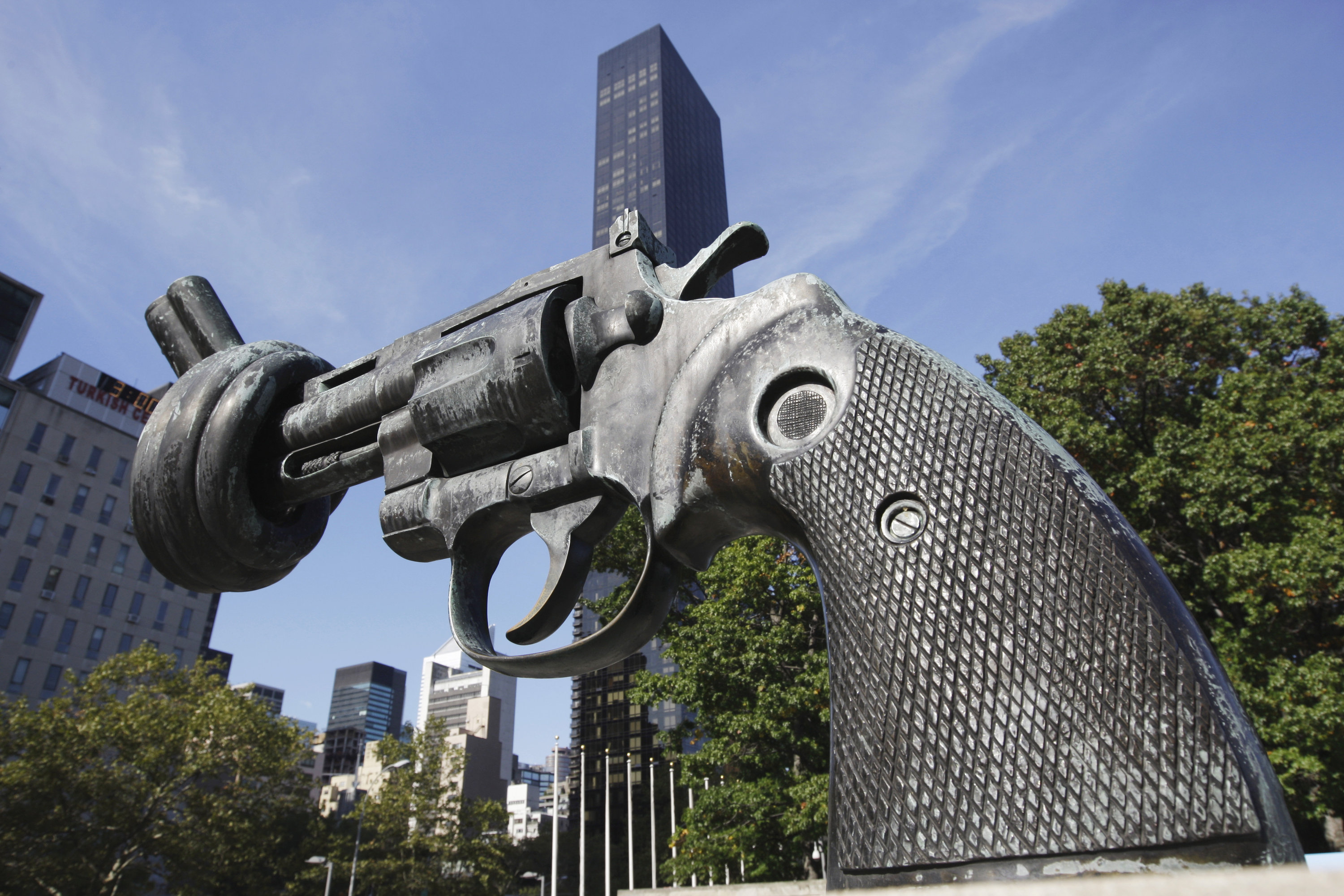MOSCOW, March 29 - RAPSI, Ingrid Burke. Widespread optimism that the UN Final Conference on the Arms Trade Treaty would culminate in the adoption of a binding legal text regulating the international arms market was abruptly derailed Thursday at the hands of Iran, Syria, and North Korea, who asserted concerns that the draft document did little to ensure the protection of their national interests.
An official statement released by the office of UN Secretary General Ban Ki-moon conveyed a sense of deeply-rooted frustration: “The Secretary-General is deeply disappointed with the failure of the Final United Nations Conference on the Arms Trade Treaty to reach an agreement on a treaty text. The treaty had been within reach, thanks to the tireless work and spirit of compromise among Member States.”
This was not the last nail in the draft treaty’s coffin, however. The UN may circumvent the Conference’s stringent consensus requirement through a UN General Assembly vote.
The UN General Assembly is expected to consider the Conference on April 2.
The Conference’s consensus requirement
Conference negotiations were held on a consensus decision-making basis. Theoretically this would seem to mean that adoption would be contingent upon every party consenting to the draft. Thursday’s proceedings made clear that perhaps this is perhaps too loft a goal for 193 nations.
In fact, similar efforts ended in a stalemate last summer at the hands of the US, which asserted concerns that due to the complexity of the global arms trade, the earlier draft would require further refinement and review.
When Iran, Syria, and North Korea made clear their refusal to consent to the present draft Thursday, Mexico’s UN representative suggested that based on overwhelming support for the draft, the Conference should move forward with its adoption sans vote, asserting a lack of formal definition for “consensus.”
Syria’s representative countered, arguing that “consensus” excludes the possibility of adopting a decision in the presence of formal objections.
Russia’s representative supported this point, asserting that in light of the fact that Iran, Syria, and North Korea had each explicitly stated its refusal to consent to the draft, an adoption would constitute an “unacceptable manipulation” of consent. He warned that it would be inappropriate to “simply disregard the rules of multilateral diplomacy.”
The Conference culminated in the production of a report that will now be forwarded to the UN General Assembly.
The report’s adoption segued into a similar debate to that which blocked the draft’s adoption when Iran insisted that the report’s text be amended to include the statement: “The draft decision was not adopted by consensus.”
When Conference President Peter Woolcott of Australia countered that he would tell the UN General Assembly of the consensus failure orally, Iran’s representative asserted the imperative of playing by the rules rather than endeavoring to create “problematics.”
A watered down variation of Iran’s request was ultimately decided upon.
Although disappointed both with the practical outcome of the March negotiations, and with its reflection of the capacity of the UN to reach a consensus, Woolcott expressed confidence that the UN General Assembly’s consideration of the report, saying: “the treaty is coming.”
The draft treaty
On Wednesday the UN Office of Disarmament Affairs had released a copy of the draft treaty. The text is the product of seven years of compromise and negotiations between the UN member states.
The draft’s aims include imposing the highest standards for regulating the legal international arms trade and eradicating the black arms market. These aims are motivated by desires to contribute to international peace and security, reduce human suffering, and build trust and cooperation between states party to the treaty.
Among the list of arms sought to be regulated are: battle tanks, armored combat vehicles, large-caliber artillery systems, combat aircraft, attack helicopters, warships, missiles and missile launchers, and small arms and light weapons.
The draft would require each state party to establish and maintain a national control system to regulate the export of ammunition that could be fired by any of the listed arms, as well as component parts.
States would be required to consider compliance with various international agreements before authorizing the transfer of any of the arms, ammunition, or component parts sought to be regulated. They would be prohibited from authorizing any transfer that would violate: actions taken by the UN Security Council in accordance with their Chapter VII powers, such as embargoes or binding international agreements.
Furthermore, states would be prevented from authorizing transfers if it was known that “the arms or items would be used in the commission of genocide, crimes against humanity, grave breaches of the Geneva Conventions of 1949, attacks directed against civilian objects or civilians protected as such, or other war crimes as defined by international agreements to which it is a Party.”
Exports would be further restrained by strict assessment requirements. Among other things, states would be required to consider any possibility that a given arms, ammunition, or component-part transfer could serve to undermine peace and security, or to violate international humanitarian or human rights law.



